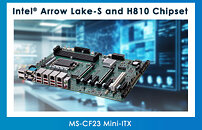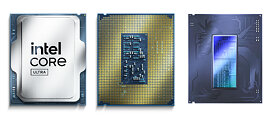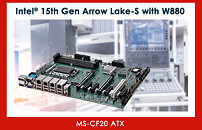
Intel "Nova Lake‑S" Series: Seven SKUs, Up to 52 Cores and 150 W TDP
Rumors of Intel's "Nova Lake-S" processors are increasing, meaning that the design is nearing completion. Expected to arrive in the second half of 2026, Nova Lake‑S will offer configurations ranging from mainstream quad‑core models to a flagship with 52 cores. Initial information suggests that Intel will employ a tile-based design, separating LPE cores from P-Cores and E-Cores to optimize flexibility and yield. At the top of the lineup is the rumored Core Ultra 9 model, possibly designated 385K. It will combine 16 P-cores, 32 E-cores, and four LPE-cores for a total of 52 cores, as previously rumored. With a TDP of 150 W, it will be the most powerful SKU Intel prepared for this generation. Below the flagship, Intel appears to be planning a Core Ultra 7 SKU with 14 P-cores, 24 E-cores, and four LPE cores, totaling 42 cores.
The Core Ultra 5 series may include three variants: a 28-core version with eight P-cores, 16 E-cores, and four LPE-cores; a 24-core version with eight P-cores, 12 E-cores, and four LPE-cores; and an 18-core model with six P-cores, eight E-cores, and four LPE-cores. Entry-level Core Ultra 3 parts would feature either a 16-core configuration with four P-cores, eight E-cores, and four LPE-cores, or a 12-core option with four P-cores, four E-cores, and four LPE-cores, both targeting a 65 W power envelope. All desktop SKUs are expected to feature four LPE cores on a separate die, suggesting a multi-tile package similar to Meteor Lake. Power demands will range from 65 W in entry-level segments to 150 W for high-end parts. Intel is reportedly preparing a new LGA 1954 socket even as it readies an Arrow Lake-S refresh for late 2025. Intel has also reportedly designated Xe3 "Celestial" for graphics rendering and Xe4 "Druid" for media and display duties.
The Core Ultra 5 series may include three variants: a 28-core version with eight P-cores, 16 E-cores, and four LPE-cores; a 24-core version with eight P-cores, 12 E-cores, and four LPE-cores; and an 18-core model with six P-cores, eight E-cores, and four LPE-cores. Entry-level Core Ultra 3 parts would feature either a 16-core configuration with four P-cores, eight E-cores, and four LPE-cores, or a 12-core option with four P-cores, four E-cores, and four LPE-cores, both targeting a 65 W power envelope. All desktop SKUs are expected to feature four LPE cores on a separate die, suggesting a multi-tile package similar to Meteor Lake. Power demands will range from 65 W in entry-level segments to 150 W for high-end parts. Intel is reportedly preparing a new LGA 1954 socket even as it readies an Arrow Lake-S refresh for late 2025. Intel has also reportedly designated Xe3 "Celestial" for graphics rendering and Xe4 "Druid" for media and display duties.
































































